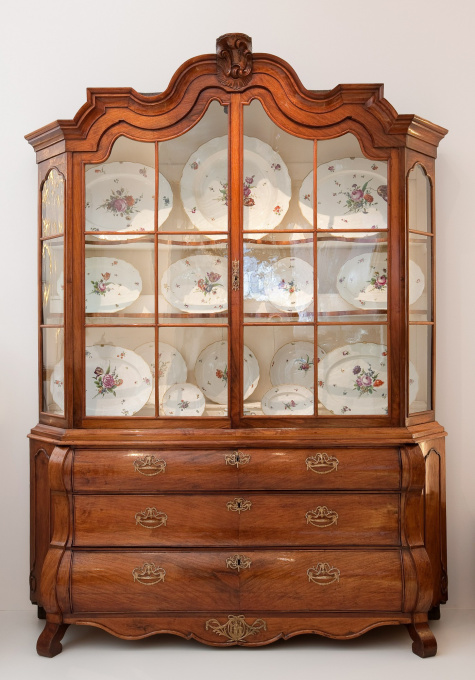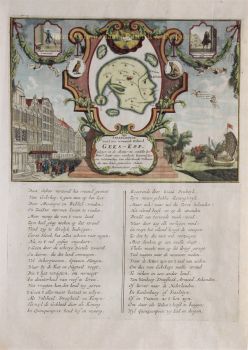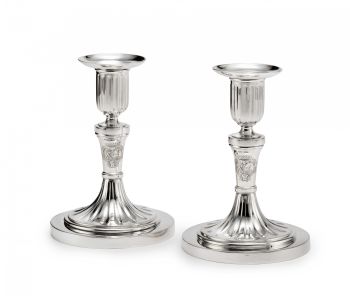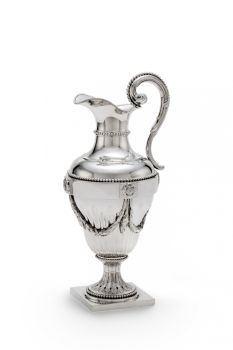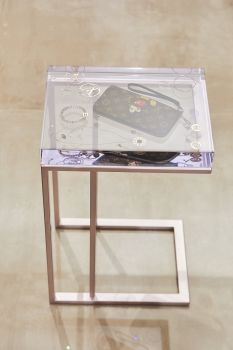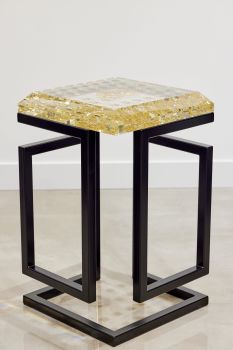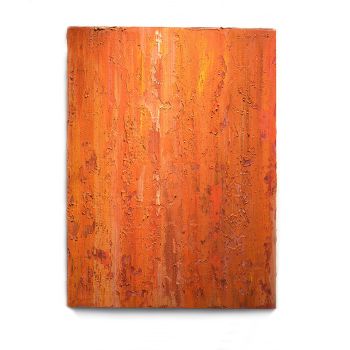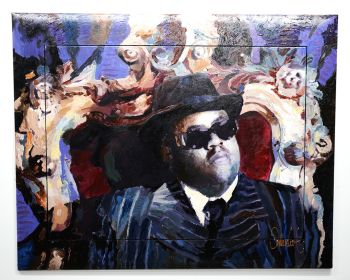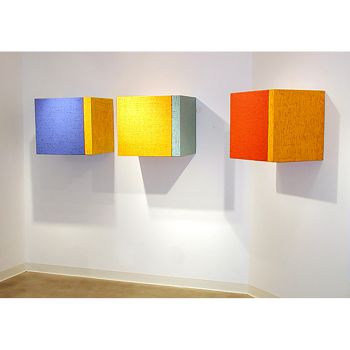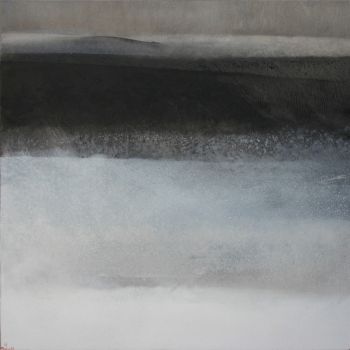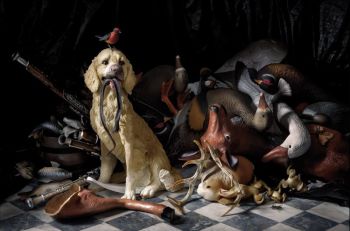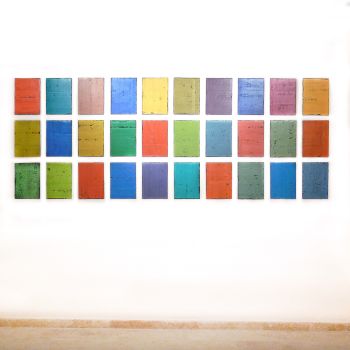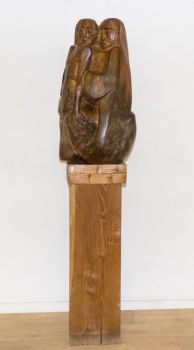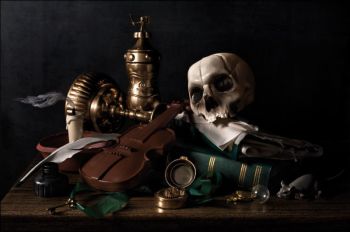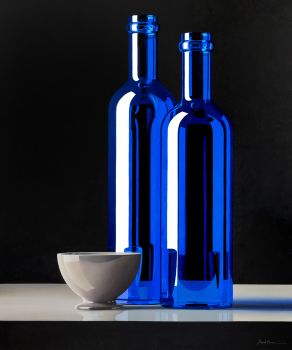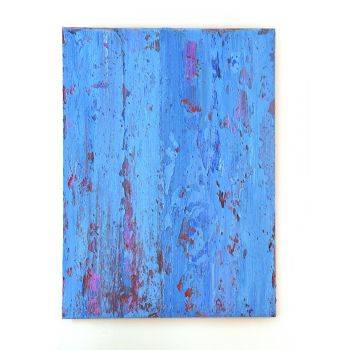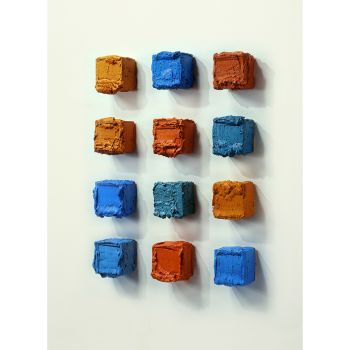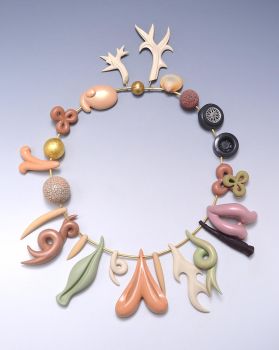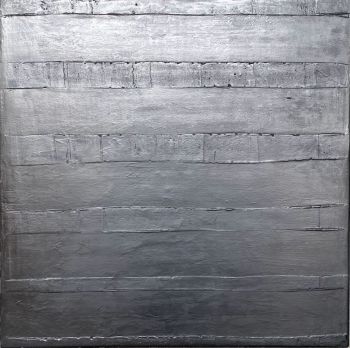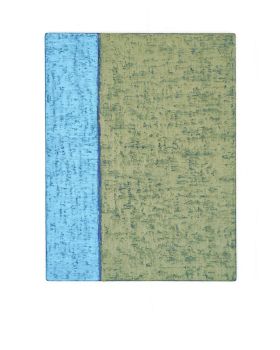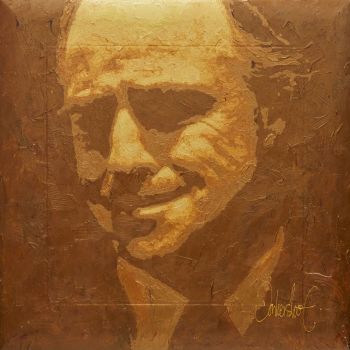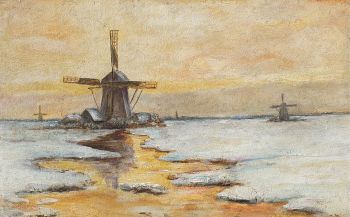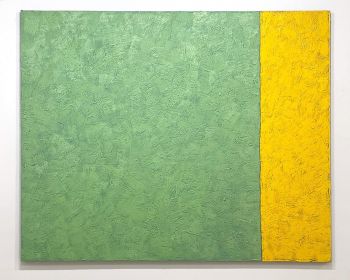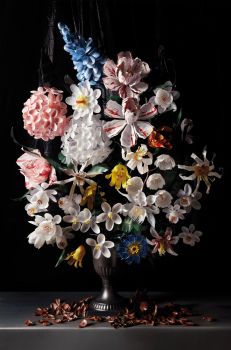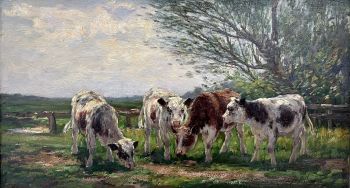A Dutch padauk display cabinet 1750 - 1790
Unknown artist
WoodPadouk Wood
Currently unavailable via Gallerease
- About the artworkThis display cabinet has been made of padauk, a tree that grows in Africa and for that reason the cabinet is quite rare. This type of wood is solid and is not likely to deform. The cabinet has a undulating arched corniche with a carved rocaille ornament and c-motifs. The fittings consist of classical motifs such as the garland and the ram. The fitting at the bottom shows a classical scene topped with a bow terminating in garlands. The function of the cabinet was for displaying precious collections of Eastern porcelain and Delftware. China was immensely popular during the 17th century and the love for it did not restrict itself to porcelain. Even complete rooms were furnished in the chinoiserie style. It was only after 1750 that the interest in Eastern porcelain decreased and fewer cabinets were made.
Provenance:
Private collection - About the artist
It might happen that an artist or maker is unknown.
Some works are not to be determined by whom it is made or it is made by (a group of) craftsmen. Examples are statues from the Ancient Time, furniture, mirroirs, or signatures that are not clear or readible but as well some works are not signed at all.
As well you can find the following description:
•“Attributed to ….” In their opinion probably a work by the artist, at least in part
•“Studio of ….” or “Workshop of” In their opinion a work executed in the studio or workshop of the artist, possibly under his supervision
•“Circle of ….” In their opinion a work of the period of the artist showing his influence, closely associated with the artist but not necessarily his pupil
•“Style of ….” or “Follower of ….” In their opinion a work executed in the artist’s style but not necessarily by a pupil; may be contemporary or nearly contemporary
•“Manner of ….” In their opinion a work in the style of the artist but of a later date
•“After ….” In their opinion a copy (of any date) of a work of the artist
•“Signed…”, “Dated….” or “Inscribed” In their opinion the work has been signed/dated/inscribed by the artist. The addition of a question mark indicates an element of doubt
•"With signature ….”, “With date ….”, “With inscription….” or “Bears signature/date/inscription” in their opinion the signature/ date/ inscription has been added by someone other than the artist
Artwork details
Related artworks
Unknown artist
Set Franse Empire Pendules / Empire Lectura penduleearly 19th
Price on requestKuipers Kunst & Antiek
Unknown artist
A IVORY NETSUKE OF A DUTCHMAN HOLDING A COCKEREL18th century
Price on requestZebregs & Röell - Fine Art - Antiques
1 - 4 / 12Reynier de Haan
An elegant Louis XVI Dutch Silver Monteith Bowl 1778
Price on requestJacob J. Roosjen SRI
1 - 4 / 7Unknown artist
A JAPANESE MODEL OF A NORIMONO, A PALANQUIN1650 - 1700
Price on requestZebregs & Röell - Fine Art - Antiques
1 - 4 / 24Unknown artist
An Indian part-gilt silver-clad ceremonial sceptre or mace with a tiger’s head1850 - 1900
Price on requestZebregs & Röell - Fine Art - Antiques
 Curated by
Curated byDanny Bree
Unknown artist
A JAPANESE MODEL OF A NORIMONO, A PALANQUIN1650 - 1700
Price on requestZebregs & Röell - Fine Art - Antiques
1 - 4 / 24

